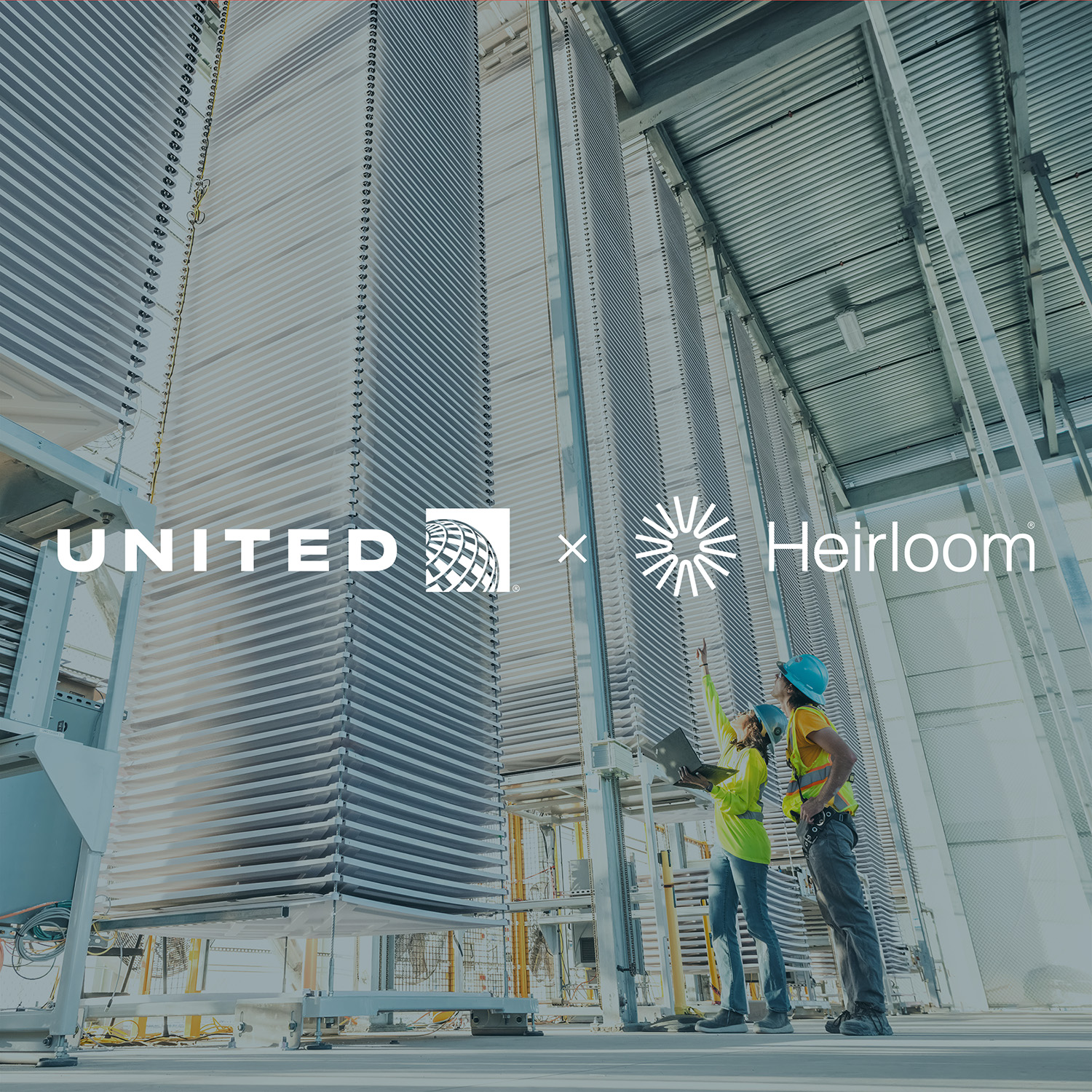Heirloom & CarbonCure Sign Agreement to Permanently Store Atmospheric CO2 in Concrete
Collaboration advances key DAC-to-concrete storage pathway pioneered earlier this year
If you’ve been following the Heirloom journey, you may remember that we made history with CarbonCure and concrete producer Central Concrete by demonstrating for the first time ever the ability to capture CO2 from the atmosphere and permanently embed it in concrete. Today, we’re proud to share that proof-of-concept is now a partnership between Heirloom and CarbonCure to store CO2 removed from the air by our direct air capture technology!

The agreement extends through 2025 to permanently store the atmospheric CO2 we capture in concrete using CarbonCure’s carbon mineralization technologies, providing an immediately-available storage solution that will enable us to scale our technology, while other storage frameworks, like Class VI Wells, come online. The beauty of concrete storage is its durability –– the CarbonCure process keeps CO2 out of the atmosphere for centuries, even if the concrete is demolished.
This new agreement will see CarbonCure permanently store CO2 captured by Heirloom’s DAC facilities in nearby concrete plants. CarbonCure provides a proven, immediately-available and verifiable concrete storage solution as Heirloom prepares to launch its first commercial facility. In addition to this agreement, Heirloom and CarbonCure are also working together following notification of selection by the Department of Energy for a DAC Hub project in Illinois.
Our CEO, Shashank Samala made the following comment about the deal: “The urgency of deploying and scaling removal technologies becomes more clear with each temperature record that is broken. Working with CarbonCure opens an immediately-available, permanent storage pathway that will allow Heirloom to continue scaling our technology today. Being able to immediately move forward with real-world deployments that permanently sequester CO2 will be invaluable as we race to meet the urgency that climate change requires.”
And Robert Niven, the CEO of CarbonCure Technologies added: “CarbonCure is very excited to collaborate with Heirloom, demonstrating the very near-term opportunity for carbon removal, not just this decade but over the next few months. Ours is a climate solution that puts captured CO2 to good use, permanently storing it and using it to build greener homes, highways, high-rises and more.”
If you’re just hearing about Heirloom, we use limestone, an abundant, easy-to-source and inexpensive material, to pull CO2 from the air. Harnessing a cyclic process, the limestone is broken down into calcium oxide rock and CO2 gas using heat from a renewable-energy powered, electric kiln. The calcium-based material is spread onto vertically stacked trays where it acts like a sponge – pulling CO2 from the air before it is returned to the kiln and the process begins again. The captured CO2 gas is then permanently stored – either safely underground or embedded in concrete. While Heirloom is exploring a diverse range of storage frameworks that suit the locations in which we deploy, we do so with the understanding that gigaton scale removal requires Class VI Wells to come online.
In August, we received Notification of Selection from the U.S. Department of Energy (DOE) for a proposal for the Bipartisan Infrastructure Law’s Regional Direct Air Capture (DAC) Hubs program in Louisiana. In September, we also signed a deal to deliver 315,000 metric tons of CO2 removal to Microsoft – one of the largest CO2 removal deals to date.
CarbonCure licenses a suite of carbon mineralization technologies to nearly 800 concrete plants across 35 countries. When CarbonCure injects CO2 across the concrete manufacturing process, it immediately mineralizes and becomes permanently embedded. CarbonCure’s Carbon XPRIZE-winning technologies also enable concrete manufacturing with less carbon emissions from virgin cement, less fresh water usage and less waste material. To date, CarbonCure’s global network of concrete producer partners has produced more than five million truckloads of carbon mineralized concrete, removing and reducing more than 365,000 metric tons of CO2. That’s equivalent to taking more than 80,000 gas-powered cars off the road for a year.
Read More

Development Bank of Japan and Chiyoda invest in scaling Heirloom’s low-cost Direct Air Capture technology

Working with United Sustainable Flight Fund to Accelerate Aviation’s Path to True Net Zero


